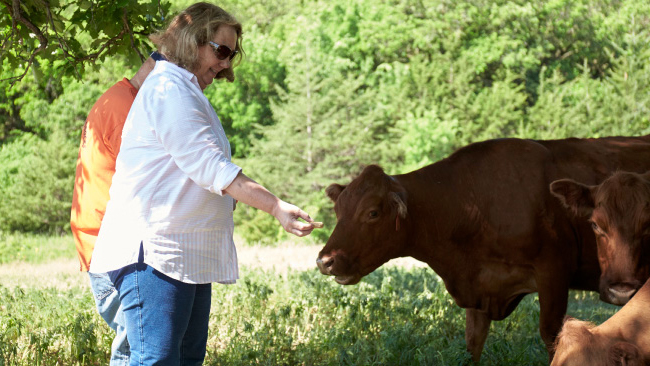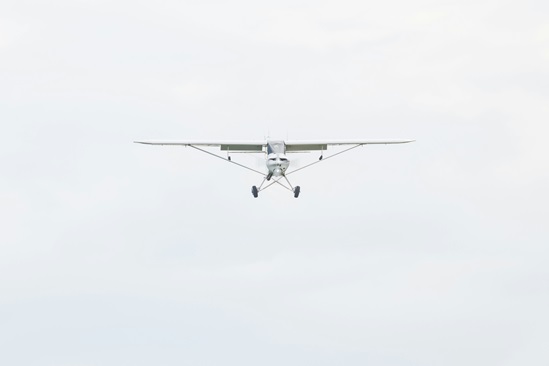Letters from our June 2017 issue
Lessons from the cockpit
What a thoughtful, poignant, and pertinent article Dave Hirschman wrote about lessons learned in the cockpit. I flew our family frequently for business and pleasure throughout North America during my 55-year flying career. I always wanted my three children to learn to fly for all the reasons that you gave and more, but none of them were interested. Perhaps it was because I could never verbalize my thoughts as eloquently as Hirschman. I’m working on the grandchildren now.
Gerald E. Berlyn
AOPA 632392
Nantucket, Massachusetts
As others, I have tried planting the aviation seeds over the years with my meager private pilot skills. I know of a few who have grown to appreciate the world that we think about too much and probably spend much money on. But I agree: How do you put a price on the experiences of life? You know; those really good experiences. Like the unexpected solo flight your instructor springs on you as a young student. Sweaty palms and that shaky voice talking to the tower. Feeling that first landing bounce all by yourself.
The magnificent view of a cloud being formed in morning as you make your first long cross-country flight. Sunset on the countryside from a very different viewpoint.
The character, respect, and responsibility that a student gains in becoming a pilot goes way beyond the “ticket to fly.”
James Self
AOPA 3661796
Pearl, Mississippi
Sometimes I have pondered what it cost for me to earn my certificates. I was lucky enough to have a father who not only supported but funded my training at age 17. Fast forward to present day: My “backup” engineering career became my primary, and sometimes I question if it was all worth it. But Dave Hirschman made that clear. I was that young man and have learned each of those lessons.
Steve Neuf
AOPA 1295278
Northport, New York
Winging it
Great article (“Proficient Pilot: Broken Wings”)! I wholeheartedly agree. I absolutely loved the Wings program when it had 10 stages. You always got a label pin and a certificate, and it qualified for the flight review substitution. It was a very comprehensive flight review in the flight portion.
They changed it, and I don’t know anyone who still does it. My own flight instructor walked away from it.
Andreas Lauschke
AOPA 1371405
Morris Plains, New Jersey
I just read Barry Schiff’s June 2017 article “Broken Wings,” and he absolutely nailed it. I started flying in 2010 and now have 400 hours and a relatively new instrument rating. I started the Wings program in about 2012 (right after finishing my private pilot certificate, to keep learning) but my continued participation has slowed for exactly the reasons you list. My “wings” were quite a disappointment, appearing to be worth about 39 cents, and the FAA website is so clunky that it is real work to log in and track my status. I find myself longing for a better recurrent training program but have turned to AOPA and Cirrus for those experiences. If the FAA isn’t more serious about Wings, and pilot participation is so low, they should scrap it. If they are serious and want more participation, the program needs not one new cylinder but a complete overhaul.
Andrew DeWoody
Midland, Texas
Drone boon
Kudos on the great article “Pilot Briefing: Exploiting the third dimension.” Even though general aviation is embracing drone technology, many older pilots are not. I agree with John King: “If even a tiny percentage of drone pilots move on to manned aircraft, the benefit to the aviation community could be huge.”
Pierre J. Moeser
AOPA 7660753
Chesterfield, Missouri
Not right
For what it’s worth, I’ve seen something similar many years ago in my 1948 Navion (“Waypoints: Something’s Not Right”). It had sat out overnight in heavy rain. After a thorough preflight checking for water in the fuel tanks (and found some), we departed on a clear day. A few hundred feet in the air, the altimeter was sluggish and was bouncing up and down. It was very odd. I don’t recall the airspeed behavior, but the altimeter was quite active. Eventually it settled out.
It weighed on my mind during the flight, and it occurred to me perhaps water had gotten into the static port. On another occasion, after heavy rain, I put my mouth over the static opening and very gently applied a little suction—water! It took two or three gentle sucks to get all the water out.
The Navion has dual static ports on each side that loop up to the top of the fuselage and tie together, then run forward as a single line. Apparently, capillary action can draw some water up into the static line.
Mike Rhodes
AOPA 497857
Gresham, Oregon
Doing aviation right
On a long cross-country flight from Mack Mesa, Colorado to Ann Arbor, Michigan, we stopped at the Norfolk Regional Airport in Nebraska to spend the night. On landing, we had a problem with the brake disc bolts coming loose, which rendered the right brake unusable. We parked in front of the Barnstormer Family Bar and Grill and went inside to see if we could find a mechanic and hopefully a ride to the closest motel.
What we found was nothing short of phenomenal: food, service, wonderful people, and a world-class mechanic. The mechanic was scheduled to drive to another town to work on another airplane in the morning, and we were wondering how many days we would be delayed. Arriving at the airport in the morning we found the mechanic already at work, and at 11 a.m. we were taking off. I have been in aviation for almost 50 years and have never experienced anything that compared to the wonderful warm people at this airport. They “do aviation right”—helping a fellow aviator just because the help is needed.
Troy Ball
AOPA 8867125
Grand Junction, Colorado
All the world’s aviation books
Jane’s has been in publication since 1909. Not continuous during war years, however, but the question [“What aviation book has been in publication longer than any other, and what is the runner up?”] (“Test Pilot”) didn’t say continuous.
Ed Wischmeyer
AOPA 509307
Savannah, Georgia
Barry Schiff responds: Interesting point, but I do not believe that Jane’s counts because it is a new book every year. It is not the same book and same contents published year after year after year. In fact, the title of each year’s book is different so as to include the year(s) of coverage.
Hangar Talk
 “I grew up in Frederick, Maryland (site of AOPA headquarters), which is a rural area and has lots of farmland. So there are cows here. But I’ve never personally met one,” admits Senior Features Editor Julie Summers Walker. When she took the assignment to meet the family that runs Huffy’s Airport Windsocks in Nebraska, Walker was stunned to learn the Hoffman’s 1,000-acre farm was a four-hour drive from Omaha (nothing is four hours away in the Mid-Atlantic!) and to discover that in addition to making much of the world’s inventory of windsocks in their hog barn, the Hoffmans have a cow-calf ranch. “So we drove out on the ranch in one of the several Kubotas the family uses to see the cows and calves. The young kids got a kick out of this ridiculous ‘city girl’ freaking out when the cows came at me to eat a treat from my hand. I’d have preferred to see the cows from the vantage point of Gary’s Cherokee Six or Super Cub, but it was too windy—which is ironic when you’re doing a story on making windsocks!” (see “All in the Family,” on page 60).
“I grew up in Frederick, Maryland (site of AOPA headquarters), which is a rural area and has lots of farmland. So there are cows here. But I’ve never personally met one,” admits Senior Features Editor Julie Summers Walker. When she took the assignment to meet the family that runs Huffy’s Airport Windsocks in Nebraska, Walker was stunned to learn the Hoffman’s 1,000-acre farm was a four-hour drive from Omaha (nothing is four hours away in the Mid-Atlantic!) and to discover that in addition to making much of the world’s inventory of windsocks in their hog barn, the Hoffmans have a cow-calf ranch. “So we drove out on the ranch in one of the several Kubotas the family uses to see the cows and calves. The young kids got a kick out of this ridiculous ‘city girl’ freaking out when the cows came at me to eat a treat from my hand. I’d have preferred to see the cows from the vantage point of Gary’s Cherokee Six or Super Cub, but it was too windy—which is ironic when you’re doing a story on making windsocks!” (see “All in the Family,” on page 60).


